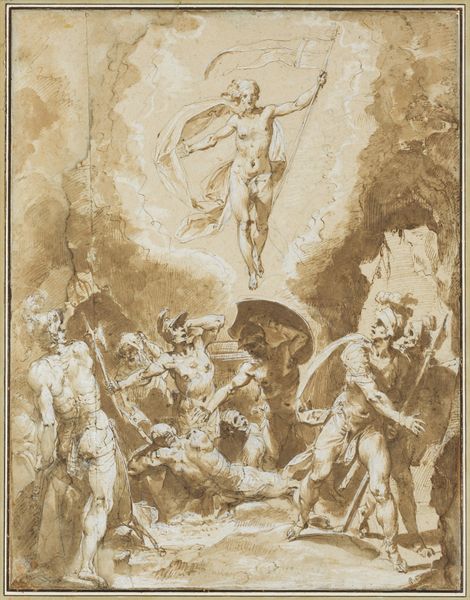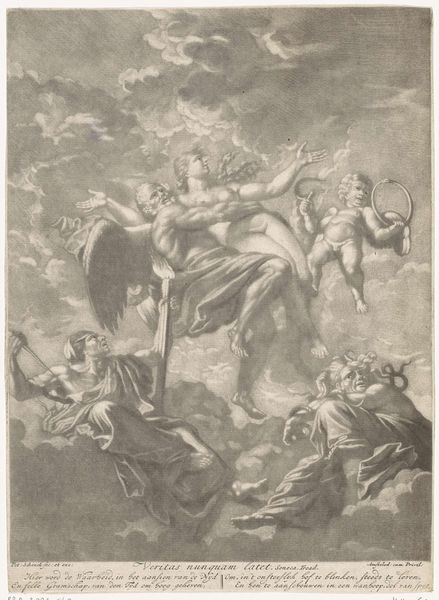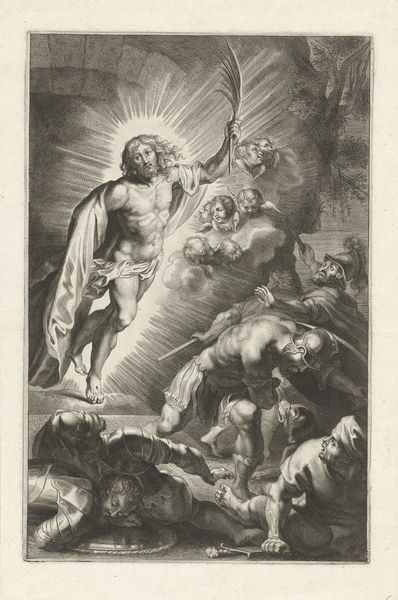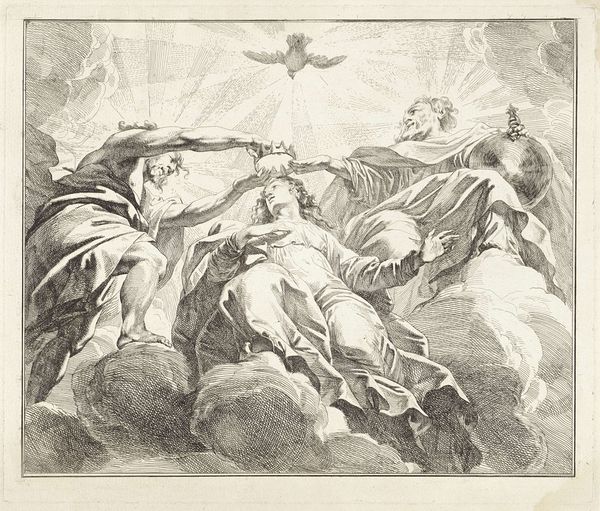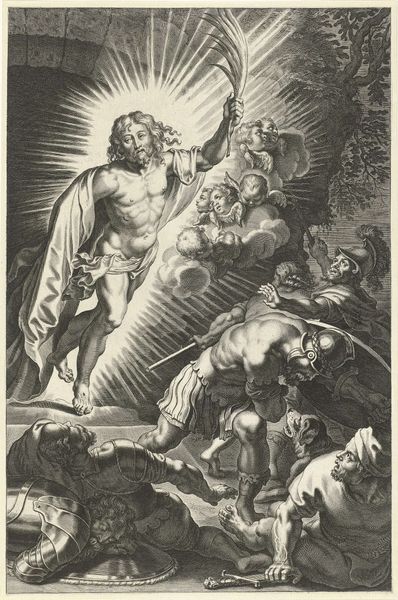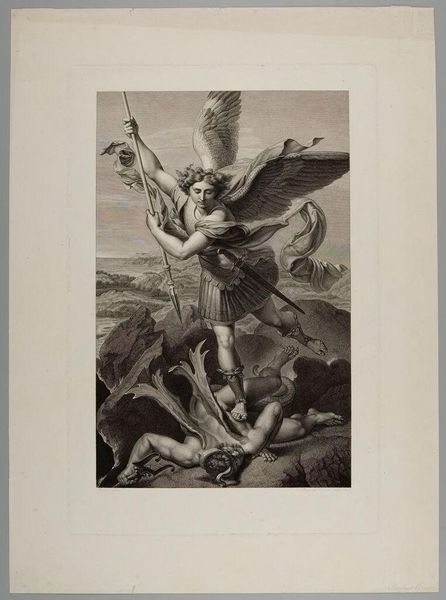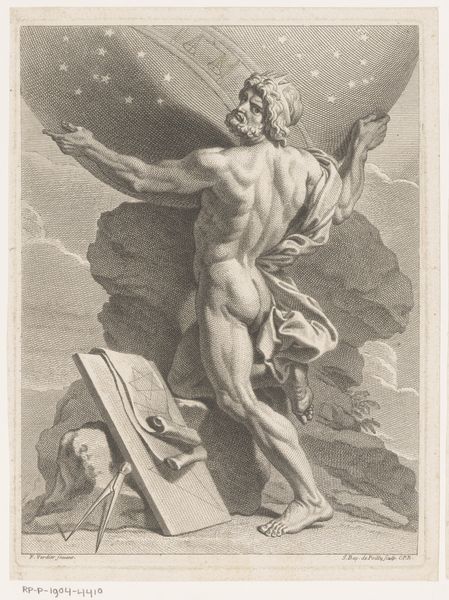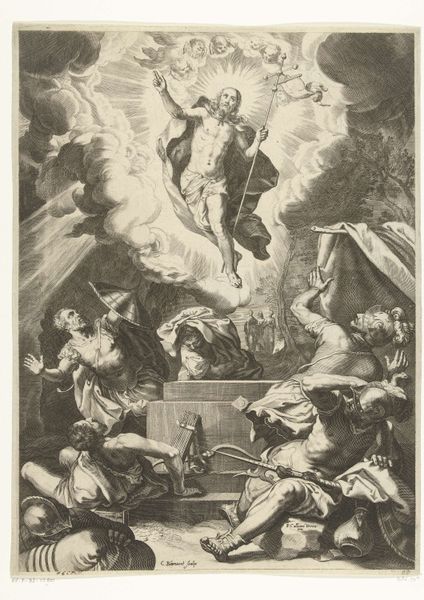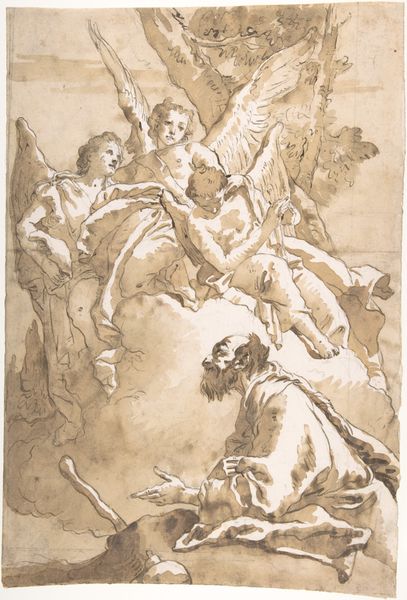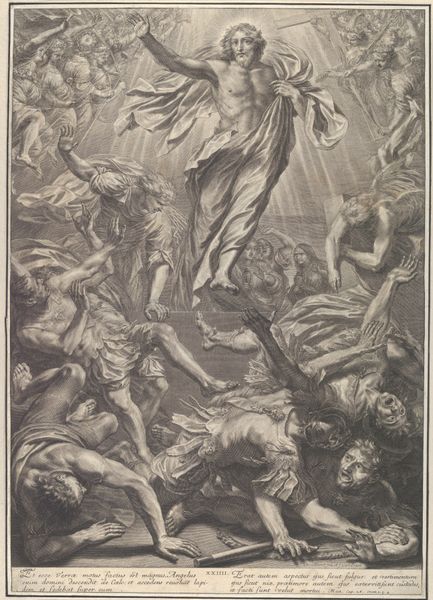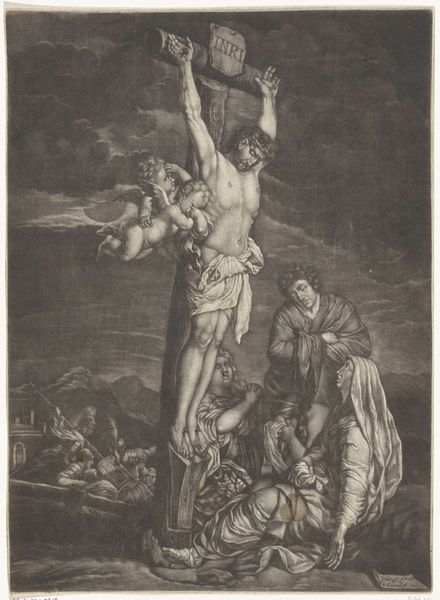
drawing, ink, pen
#
drawing
#
allegory
#
baroque
#
figuration
#
ink
#
line
#
pen
#
history-painting
#
christ
Dimensions: height 342 mm, width 218 mm
Copyright: Rijks Museum: Open Domain
Curator: The dynamism in Jacob de Wit's "Resurrection of Christ," dating to 1736, immediately strikes me. Look at how the artist captured this pivotal biblical scene through such gestural strokes in pen and ink. Editor: It's certainly energetic. But my first impression is how this depiction also embodies a rather idealized and perhaps exclusionary vision of religious power. Look at the contrasting figures: the illuminated Christ versus the struggling, darker guards. What statements is de Wit making about dominance, here? Curator: Well, the artistic choices certainly support the ideological framework, but I am more drawn to analyzing the artist’s technique. It's all about line and form, really—how de Wit creates this almost sculptural effect on paper. The cross-hatching is quite detailed, even though he works with fairly simple materials. How do pen-and-ink contribute to a narrative of transcendence? Editor: I appreciate the craft, of course. But for me, the potency stems from how this piece participates in larger dialogues about faith, control, and resistance. The very depiction of Christ resurrected inherently addresses freedom from oppression, or the possibility of challenging unjust powers. Is De Wit perhaps reflecting, consciously or not, the political anxieties of his time through a biblical lens? The guards, the agents of suppression, being thrown into disarray. It mirrors socio-political upheaval, right? Curator: You're asking a very modern question of an 18th-century artwork. For De Wit, working within the conventions of Baroque history painting and allegory, it's important to remember the patron and intended audience—likely deeply enmeshed in established power structures. Editor: But, isn't that precisely what allows us to dig deeper? Recognizing how historical power relations affect even these supposedly ‘sacred’ themes offers ways of understanding faith and society anew. If art doesn’t speak to our time and present challenges to our current state, is it really doing its job? Curator: Perhaps... and perhaps part of its power resides, in that era and our own, in the mastery and handling of the materials themselves. De Wit challenges our preconceptions regarding what can be done with just ink and a pen. Editor: Maybe, maybe... it’s both: The way in which he challenges the form echoes the potential challenges to existing orders that it presents as an allegory. Food for thought!
Comments
No comments
Be the first to comment and join the conversation on the ultimate creative platform.
